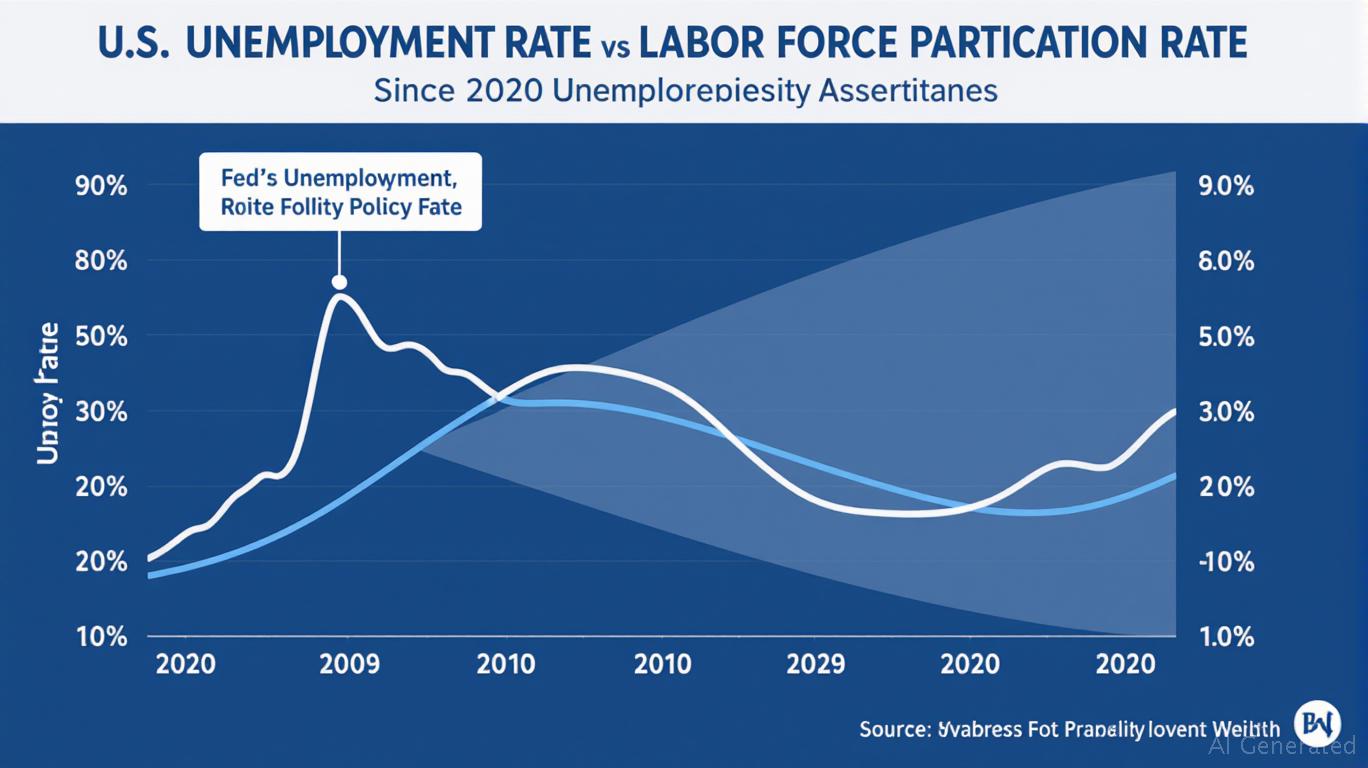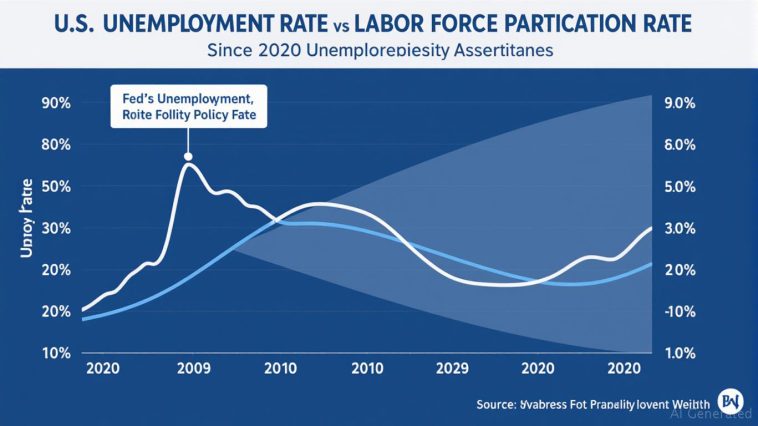
The Changing Face of Small Business and Industrial Manufacturing
In today’s dynamic economy, small business owners and industrial manufacturers are encountering a landscape filled with both exciting opportunities and a number of tricky parts. The business world is evolving rapidly, and traditional practices are increasingly merging with innovative approaches that center around technology, sustainability, and digital marketing. Entrepreneurs and managers alike are finding themselves in a situation where they must figure a path through a maze of regulations, market shifts, and technological advancements.
Small business owners are particularly sensitive to shifts in the economic climate. With changes in trade policies, tax laws, and consumer behavior, the challenges they face are not only numerous, they are also filled with twists and turns that can seem overwhelming at times. It is essential for business leaders to stay informed on the latest trends to keep up with the ever-changing market conditions.
Industrial manufacturing, on the other hand, is dealing with its own specific set of challenges. The integration of advanced technologies such as automation, robotics, and data analytics has altered the traditional manufacturing process. Companies must now invest in training their workforce and updating operational protocols to remain competitive. Although these changes bring a host of benefits, such as increased efficiency and product quality, they also come with their own share of confusing bits that require much thought and preparation.
Understanding the Impact of Business Tax Laws on Small Enterprises
Business tax laws have always been a critical subject for small business owners and entrepreneurs. Recent reforms and updates in tax legislation are proving to be a super important topic for many business leaders who need to understand how shifting policies affect their bottom line. Many owners find themselves sorting out the fine points of tax codes, trying to determine what is deductible and how to maximize tax incentives without falling afoul of compliance rules.
One key aspect of modern business tax law is the emphasis on transparency and accountability. Governments around the world have implemented new measures designed to simplify reporting requirements while also ensuring that businesses contribute their fair share to public finances. Such changes can be nerve-racking for those who are unfamiliar with the latest developments, but working through these shifts is essential for long-term financial health.
For many small enterprises, the following bullet list highlights some of the essential tax-related considerations:
- Understanding the implications of new tax reforms on cash flow
- Managing record-keeping requirements to meet enhanced transparency demands
- Optimizing deductible expenses without triggering an audit
- Leveraging federal, state, and local incentives for modernization and sustainability
- Staying compliant with the shifting criteria for business classifications
In addition, the government frequently updates guidance on these matters. It is a good idea for business owners to consult with tax professionals who can help them steer through the tricky parts of compliance and find ways to benefit from available allowances. This proactive approach allows companies to avoid unexpected penalties and ensures that tax strategy remains aligned with overall business growth targets.
The Rising Wave of Electric Vehicle Manufacturing
The automotive industry is undergoing a radical shift with the surge in electric vehicle (EV) manufacturing. Traditional automakers are quickly rethinking their strategies to accommodate the growing demand for greener technologies. This movement presents an array of opportunities as well as a couple of tangled issues that manufacturers must sort out.
As environmental concerns and regulatory pressures mount, electric vehicles are becoming a central focus in the automotive market. Companies that were once reliant on internal combustion engines are now investing heavily in research and development to offer EV alternatives. This transformation is not without its challenges. Manufacturers have to handle multiple layers of technological upgrades, supply chain redesigns, and the integration of advanced software systems into vehicle designs.
Several key points encapsulate the current state of the EV manufacturing sector:
- Increased government support and tax incentives for EV developments
- Rapid advancements in battery technology and energy storage solutions
- Growing consumer demand for sustainable and eco-friendly transportation
- Shifts in the global supply chain to source critical materials responsibly
- Competing pressures to maintain affordability while meeting performance benchmarks
These trends not only represent a pivotal moment in automotive history but also signal broader implications for environmental policy and industrial innovation. Stakeholders in the industry must continue to invest in R&D and strategic partnerships to ensure that they can meet consumer expectations and regulatory requirements without delay.
Figuring a Path Through Economic News and Market Trends
Every day, economic news outlets report on the developments that directly impact business strategy, investment decisions, and consumer behavior. For business leaders, staying informed is not merely a side project; it’s a must-have component of effective management. However, the modern information landscape is filled with a mix of reliable insights and sensationalized headlines that can obscure the smaller twists of truth beneath.
When business owners encounter sweeping economic forecasts or periodic market shocks, it is essential to get around the overwhelming data and understand what it means in practical terms. In many instances, investment decisions are based on a careful reading between the lines. This involves breaking down the complex narrative and isolating the central ideas that drive market dynamics.
To better organize this approach, the following table summarizes the key areas where economic news can influence business decisions:
| Area | Potential Impact | How to Respond |
|---|---|---|
| Government Policy Changes | Shifts in regulations and tax codes | Consult with advisors to adjust strategies appropriately |
| Market Volatility | Unpredictable fluctuations in stock prices and commodity values | Maintain a diversified portfolio and a reserve fund |
| Technological Advancements | New innovations impacting production and distribution | Invest in R&D and continuous training for workforce |
| Consumer Trends | Rapid shifts in demand and buying patterns | Adjust marketing strategies to target evolving interests |
The key takeaway is that a well-informed business can always use economic news to its advantage. By consistently keeping a close watch on emerging trends and analyzing market signals, business owners can find your way to developing strategies that are both flexible and robust enough to withstand futures filled with uncertain turns.
Modern Marketing Strategies for a Digital Age
The evolution of digital technology has brought marketing into a new era. Traditional advertising channels are becoming less effective by the day, and businesses are now investing heavily in digital marketing tactics that promise targeted reach and measurable outcomes. Although the transition to digital can be off-putting for some, those who take the initiative to adapt early on often find that the rewards are significant.
Utilizing digital marketing effectively means understanding everything from social media trends to search engine optimization. The following bullet list highlights several key components of a successful digital marketing strategy:
- Developing content that resonates with your target audience
- Leveraging social media platforms to build brand awareness
- Investing in search engine marketing, including SEO and pay-per-click advertising
- Utilizing data analytics to measure performance and refine strategies
- Engaging in influencer collaborations to tap into established audiences
Each of these components comes with its own set of confusing bits. For instance, while analytics can offer a fine-grained view of consumer behavior, interpreting this data correctly requires both expertise and experience. Similarly, the rapidly shifting algorithms of social media platforms mean that strategies which were once effective can quickly become obsolete. It is therefore super important for businesses to remain flexible and innovative in their marketing approaches.
Moreover, as digital marketing continues to evolve, businesses must also consider how to integrate traditional methods with new digital avenues. Offering a balanced strategy that weighs both the credibility of conventional media and the reach of digital platforms can create a synergistic effect, driving growth and consumer engagement in both realms.
Working Through the Tricky Parts of Automotive Industry Evolution
The automotive industry stands as one of the most visible examples of rapid industrial evolution. For decades, the market has been dominated by the production and sale of vehicles powered by internal combustion engines. However, the increasing focus on sustainability and environmental responsibility has given rise to a broad drive toward electric vehicles and alternative propulsion systems.
Automakers are under pressure to quickly adapt and retool their operations to meet these new demands. This transition is filled with several complicated pieces and subtle parts, ranging from technology upgrades to workforce re-skilling. While the benefits of adopting clean technology — such as reduced emissions and lower operating costs — are clear, the process of making this shift is often on edge and requires meticulous planning.
A detailed look at the automotive sector reveals several core areas where enthusiasts and professionals alike need to take a closer look:
- Supply Chain Re-Configuration: Securing reliable sources for critical EV components like batteries can be a nerve-racking task given global competition for resources.
- Technological Adoption: Integrating cutting-edge systems into traditional manufacturing lines demands both caution and significant investment.
- Regulatory Compliance: Staying updated with environmental policies, which are continually evolving, is essential for avoiding costly penalties.
- Workforce Transformation: Effective training programs are needed to help employees transition to new production methods that emphasize renewable technologies.
- Market Positioning: Shifting consumer perceptions and redefining brand identities in the face of technological change requires creative marketing and strategic communication.
Steering through these challenges isn’t just about having the resources; it also demands understanding the subtle details and hidden complexities that come with a major industry overhaul. Manufacturers must balance the need for immediate action with long-term strategic planning, always mindful of the consequences of delayed responses in a highly competitive global market.
Key Considerations in Balancing Traditional and Innovative Approaches
While the pressure to adopt innovative strategies is strong in every industry, there remains an enduring value in traditional approaches. For small businesses and even larger industrial operations, the key is to strike a balance between time-tested methods and the adoption of new technologies and practices. This balancing act involves careful consideration of financial constraints, workforce capabilities, and market expectations.
One of the most significant benefits of traditional business practices is their familiarity and proven success over time. These methods often provide a stable foundation upon which businesses can experiment with new strategies. Simultaneously, technological innovations can open avenues for enhanced efficiency and market expansion.
In practice, business leaders are encouraged to consider the following steps to harmonize traditional and emerging methods:
- Conduct a Comprehensive Audit: Evaluate existing processes and identify the small distinctions between established practices and the potential benefits of new methods.
- Invest in Employee Training: Equip your team with the necessary skills to handle both conventional tasks and novel digital strategies.
- Adopt a Phased Approach: Roll out technological upgrades in manageable stages to ensure smooth integration with your traditional operations.
- Monitor Market Feedback: Stay alert to consumer responses and be ready to tweak strategies based on subtle shifts in market trends.
- Engage with Industry Experts: Use advisory services and consultancy agencies that are familiar with both old and new practices to guide your transition.
This dual strategy not only helps businesses get around the challenges posed by rapid change but also preserves a sense of continuity and reliability that customers value. Many companies have successfully blended these approaches, demonstrating that it is possible to enjoy the benefits of both worlds.
Economic Indicators and Their Role in Shaping Business Strategies
For business owners and investors alike, economic indicators serve as a critical reference point. Reports on unemployment rates, consumer confidence, production data, and inflation offer clues to the economic health of markets around the globe. Although these indicators are essential, interpreting the data accurately can be a process full of twists and turns.
Successful business strategy formulation demands not just observing these numbers, but also understanding their implications. Key indicators often provide a snapshot of what’s happening on a macro level, but they also contain subtle details that signal deeper market tendencies. Here are some of the most crucial economic indicators worth paying attention to:
- Gross Domestic Product (GDP): Reflects the overall health of an economy and its capacity for growth.
- Consumer Price Index (CPI): Tracks changes in the price levels of a basket of consumer goods and services, indicating inflation trends.
- Unemployment Rate: Provides insight into the labor market and consumer spending power.
- Business Confidence Index: Gauges the optimism or pessimism among business leaders concerning future economic conditions.
- Industrial Production: Measures the real production output of manufacturing, mining, and utilities, highlighting industrial activity.
By taking a closer look at these indicators, business leaders can better figure a path through the myriad challenges of investment, expansion, and operational efficiency. When indicators suggest a slowing economy, for instance, companies may choose to reallocate resources or trim non-essential expenses. Conversely, positive trends can justify bolstering production capacity or accelerating digital transformation initiatives.
The integration of economic insight with strategic planning is one of the key factors that separates thriving businesses from those that falter in times of economic uncertainty. The best companies do not operate in a vacuum; they actively study these indicators and adjust plans accordingly to remain competitive in a constantly shifting marketplace.
Using Strategic Partnerships to Boost Competitive Edge
Collaborative efforts and strategic partnerships are proving to be a super important catalyst for innovation and growth within industries across the board. Whether it is within the small business community or large manufacturing conglomerates, partnering with other organizations can help companies gain access to resources, knowledge, and markets that would be difficult to reach on their own.
These partnerships can take many forms, ranging from joint ventures and research collaborations to supply chain alliances and data-sharing agreements. The benefits of such collaborations include, but are not limited to:
- Resource Sharing: Pooling financial, technological, and human resources to tackle expansive projects.
- Knowledge Exchange: Learning from peers and experts in various fields, thereby acquiring new skills and insights.
- Market Access: Breaking into new geographic or industrial markets through established networks.
- Innovation Acceleration: Combining R&D efforts to drive advancements in product development and processes.
- Risk Mitigation: Sharing the burden of substantial investments or volatile market fluctuations.
These collaborative strategies can help companies manage the overwhelming process of integrating new technologies or navigating the ever-changing regulatory frameworks. By taking a closer look at potential alliances and partnerships, businesses can build a more resilient structure that supports both innovation and steady growth.
In some cases, forming a strategic partnership can even lead to groundbreaking innovations. For example, a collaboration between a tech firm and an automotive manufacturer can result in the co-development of advanced driver-assistance systems, blending traditional engineering wisdom with state-of-the-art digital technology. Such projects showcase how creativity and conventional expertise can merge to create a product that is far greater than the sum of its parts.
Future-Proofing Your Business in an Era of Rapid Change
One of the most pressing concerns for today’s business leaders is the need to future-proof their organizations amid a whirlwind of unpredictable changes. Rapid technological evolution, sudden shifts in consumer demand, and unpredictable economic downturns all create an environment that can feel off-putting to even the most seasoned veteran. To thrive in such a setting requires not only agility but also forward-thinking strategy and flexible planning.
Future-proofing involves a multi-layered approach, balancing immediate operational needs with visionary planning. Some of the measures that businesses can adopt include:
- Investing in Research and Development: Staying ahead of market trends by dedicating resources to innovation can create a competitive edge.
- Enhancing Digital Infrastructure: Embracing digital transformation is key to managing current operations while preparing for future tech-based disruptions.
- Strengthening Supply Chains: Diversifying suppliers and establishing local alliances can reduce the risk caused by global interruptions.
- Employee Upskilling: Continuous professional development and training ensure that your workforce is prepared to handle both traditional challenges and new, high-tech opportunities.
- Building Financial Reserves: Maintaining a robust financial cushion empowers companies to weather economic downturns and unexpected market shocks.
Implementing these strategies not only sets the groundwork for long-term success but also helps companies to manage the tangled issues and nerve-racking uncertainties that often accompany periods of rapid change. In many respects, future-proofing is about cultivating a culture of resilience, where learning, innovation, and agility are embedded into the very fabric of the organization.
The integration of technology into everyday operations, combined with sophisticated strategic planning, provides a roadmap that can help businesses remain competitive even when facing severe market volatility. By getting into a proactive approach, leaders can ensure that their organizations not only survive but ultimately flourish despite the challenges that lie ahead.
Small Business Resilience: Lessons from Recent Economic Trends
Recent economic trends have shown that small businesses are often the most adaptive players in the face of change. Despite facing a number of off-putting regulatory challenges and market uncertainties, small business owners have repeatedly demonstrated their capacity for innovation and resilience. When traditional business models meet the unpredictable twists of modern economic conditions, the outcome is often a dynamic mix of creative problem-solving and strategic agility.
For many small business operators, the secret to success lies in their ability to quickly reallocate resources and adjust strategies in response to changing market signals. The following bullet list outlines several core lessons that small businesses have learned from recent economic trends:
- Diversification: By spreading their interests across multiple markets or product lines, small businesses can mitigate the negative effects of unexpected downturns.
- Local Networking: Building strong, community-based networks often provides both guidance and financial support during lean periods.
- Digital Integration: Embracing online platforms for marketing, sales, and customer engagement can open entirely new revenue streams.
- Agile Financial Planning: Staying flexible with budgeting, forecasting, and cash flow management ensures that businesses can adjust to economic shifts more gracefully.
- Customer-Centricity: Focusing on meeting the ever-evolving needs of customers helps to foster loyalty and consistent revenue.
The market has seen many instances where small business owners, by getting into a proactive and innovative mindset, managed to thrive during times of extensive uncertainty. These stories provide not only inspiration but also practical lessons on how to work through the challenging parts of modern business landscapes.
Ultimately, the resilience of small business owners is rooted in their willingness to learn, adapt, and take calculated risks. This spirit of ingenuity and flexibility is what positions them to succeed, even when the business environment is charged with unexpected challenges and sudden changes.
Concluding Thoughts: Embracing Change with Informed Strategy
As we reflect on the various facets of today’s economic and industrial landscape, it is clear that businesses must be prepared to figure a path through an era marked by rapid innovation, regulatory shifts, and evolving consumer expectations. The topics discussed—from the delicate balancing act between tradition and modernity in small business operations, to navigating the nerve-racking requirements of business tax laws, and the bold transformation taking place in automotive manufacturing—are all interwoven threads in the fabric of our modern economy.
Business leaders who are determined to succeed must be ready to get around the nerve-racking twists and turns that come with change. Whether it is through strategic partnerships, a careful balancing of traditional and innovative practices, or a robust engagement with economic and regulatory trends, the emphasis should always be on proactive adaptation and forward-thinking strategy.
In today’s immersive and digital economy, the importance of a well-rounded approach cannot be overstated. The fusion of accurate economic insight, agile decision-making, and continuous innovation is what will ultimately determine which businesses not only survive but thrive in the long run. For those who are willing to invest in the detailed understanding of both the fine points of traditional practices and the exciting new avenues provided by technological advances, the future indeed holds a wealth of promising opportunities.
In summary, the modern business environment, with all its confusing bits and tangled issues, remains as much an arena of opportunities as it is of challenges. By maintaining a balanced approach, rightly integrating traditional strengths with innovative solutions, and by staying informed about economic indicators and policy updates, business owners and leaders can confidently work through the tricky parts of today’s multi-faceted marketplace.
As we move forward, the need for clarity, informed strategy, and agile execution will only intensify. In an economic climate where changes occur at breakneck speed, the ability to figure a path through both predictable and unexpected challenges will define the success of tomorrow’s leaders. The journey may be full of small distinctions and hidden complexities, but it also brims with opportunities that are just waiting to be seized by those who are prepared to embrace them.
Ultimately, whether you are a small business owner, a manufacturing executive, an automotive industry specialist, or a financial strategist, the call to adapt and innovate is clear. The era of rapid change is upon us, and it is only by taking a proactive stance—by deeply understanding the intricate details of tax laws, market trends, and emerging technologies—that we can ensure sustainable growth and competitive advantage in the evolving global market.
This op-ed invites readers to consider the broader picture while focusing on the subtle details that make up the daily operations of successful businesses. The discussions covered here illustrate that, even in times of uncertainty, opportunities for growth and innovation abound—if only we are willing to get into the process and address both the nerve-racking challenges and the off-putting hurdles head-on.
In closing, it is super important for every business leader to acknowledge the reality of our rapidly shifting landscape, harness the potential of strategic insights, and embark on a journey of continuous evolution. The future belongs to those who are not only aware of the changing dynamics but who also possess the courage and ingenuity to turn these changes into long-term success.
Originally Post From https://www.reuters.com/world/middle-east/dollar-edges-higher-with-investors-focused-labor-market-data-2025-09-04/
Read more about this topic at
How To Write Terrible, Horrible, No Good, Very Bad Content
What If Your Article Lacks a Point?


